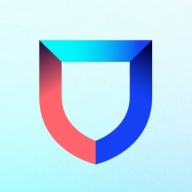

Lacework FortiCNAPP and AWS Security Hub compete in the cloud security management sector. Lacework FortiCNAPP seems to have an edge due to its strong vulnerability management and cloud integration capabilities, while AWS Security Hub benefits from its native integration within the AWS ecosystem.
Features: Lacework FortiCNAPP offers robust anomaly detection, comprehensive compliance features, and seamless integration. It excels in distilling alerts to highlight critical issues and supports multiple compliance standards like PCI and SOC 2. AWS Security Hub is recognized for its strong integration with AWS native services and third-party tools, providing a unified dashboard for security management. It offers real-time alerts and compliance checks using frameworks like AWS CIS and PCI.
Room for Improvement: Lacework FortiCNAPP requires improvements in data governance, IAM security controls, and integration with third-party SIEM tools. Enhancements in alert configuration and a more user-friendly data model are also needed. AWS Security Hub could enhance cross-cloud adaptability, improve integration with open-source tools, and reduce false positives. Better customizability of dashboards is sought after by users.
Ease of Deployment and Customer Service: Lacework FortiCNAPP users report high satisfaction with responsive customer support and proactive engagement, including a dedicated Slack channel for communication. AWS Security Hub provides average support, with smooth integration processes and minimal setup issues, yet is less personalized compared to Lacework.
Pricing and ROI: Lacework FortiCNAPP is considered expensive but offers ROI through automation and reduced monitoring efforts. Users find the pricing structure confusing initially, but it has improved. AWS Security Hub is seen as cost-effective, using a pay-as-you-go model, and leverages the AWS subscription for better value. Both solutions focus on providing value through operational efficiencies.
| Product | Market Share (%) |
|---|---|
| AWS Security Hub | 4.2% |
| Lacework FortiCNAPP | 2.2% |
| Other | 93.6% |


| Company Size | Count |
|---|---|
| Small Business | 10 |
| Midsize Enterprise | 5 |
| Large Enterprise | 12 |
| Company Size | Count |
|---|---|
| Small Business | 4 |
| Midsize Enterprise | 4 |
| Large Enterprise | 3 |
AWS Security Hub is a comprehensive security service that provides a centralized view of security alerts and compliance status across an AWS environment. It collects data from various AWS services, partner solutions, and AWS Marketplace products to provide a holistic view of security posture. With Security Hub, users can quickly identify and prioritize security issues, automate compliance checks, and streamline remediation efforts.
The service offers a range of features including continuous monitoring, threat intelligence integration, and customizable dashboards. It also provides automated insights and recommendations to help users improve their security posture. Security Hub integrates with other AWS services like Amazon GuardDuty, AWS Config, and AWS Macie to provide a unified security experience. Additionally, it supports integration with third-party security tools through its API, allowing users to leverage their existing security investments.
With its user-friendly interface and powerful capabilities, AWS Security Hub is a valuable tool for organizations looking to enhance their security and compliance posture in the cloud.
Lacework FortiCNAPP provides robust cloud security, combining vulnerability management and multi-cloud insight with user-friendly controls, machine learning detection, and compliance support.
Lacework FortiCNAPP specializes in cloud security by merging machine learning anomaly detection with agent-based vulnerability management to offer detailed alerts and compliance reports. Its comprehensive approach allows continuous monitoring across AWS and Kubernetes, providing insights from an attacker's perspective. The platform offers automation and seamless Slack integration, facilitating collaborative and efficient cloud security management. Users value its ability to handle multi-cloud environments and scan IAC scripts, configurations, and compute nodes across AWS and GCP.
What are the key features?Organizations across sectors leverage Lacework FortiCNAPP for cloud security, focusing on compliance, security posture, and vulnerability management. It is widely used for monitoring AWS and Kubernetes environments, scanning IAC scripts, configurations, and securing compute nodes. It supports multi-cloud security posture management and log ingestion, enabling companies to maintain strong cloud infrastructures without dedicated security layers.
We monitor all Cloud Security Posture Management (CSPM) reviews to prevent fraudulent reviews and keep review quality high. We do not post reviews by company employees or direct competitors. We validate each review for authenticity via cross-reference with LinkedIn, and personal follow-up with the reviewer when necessary.